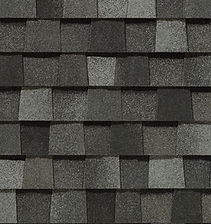Everything You Need to Know About the Components of Vinyl Siding (And Why a Pro Should Handle the Job)
- Staff
- May 29
- 3 min read
When it comes to protecting and enhancing your home’s exterior, vinyl siding is one of the most popular and cost-effective solutions available. It’s durable, low-maintenance, and comes in a wide range of colors and styles. But a high-quality siding job involves much more than just nailing up panels.
A complete vinyl siding system includes multiple specialized components that work together to ensure a clean appearance, weather resistance, and long-term performance.
Here’s a breakdown of all the essential components of a vinyl siding system—and why it's crucial to hire an experienced contractor to get the job done right.
Components of a Vinyl Siding System
1. Underlayment (House Wrap or Foam Board)
This is installed over the sheathing before the siding panels go up. It serves as a moisture barrier and can also provide added insulation, helping your home stay energy efficient.

2. Siding Panels
These are the visible outer pieces of vinyl that give your home its color and style. They interlock horizontally and are designed to expand and contract with changing temperatures.
3. Starter Strip
Installed at the bottom of the wall, the starter strip provides the base support and locking point for the first course of siding panels.
4. Outside Corners
These pieces are placed on the external angles of your home and provide a clean, finished look while allowing siding panels to fit neatly into place.

5. Inside Corners
Installed on inward-facing corners of your home, inside corners also offer a finished look and serve as a channel for siding panel ends.
6. J-Channel
A versatile trim used to finish the edges of siding around doors, windows, eaves, and other architectural features. It’s essential for both aesthetics and water control.

7. Undersill Trim
Also known as utility trim, this is used to secure the top edge of siding panels where they meet soffits or windows, helping to hold cut panels in place.
8. Light Blocks
Designed to mount exterior light fixtures, these blocks provide a flat, secure surface and help prevent water infiltration around the fixture.
9. Gable Vents
Found at the peak of gables, these vents allow for attic ventilation, which helps regulate temperature and moisture inside your attic space.

10. Dryer Vents
Specifically designed to allow exhaust from clothes dryers to exit through the siding while preventing backdrafts and pest intrusion.
11. Mini Mounts (for Hose Bibs and Electrical Outlets)
These small blocks provide a finished look and stable mounting surface for exterior hose bibs and electrical outlets.
12. Caulk
While vinyl siding is designed to be nailed loosely to allow for movement, caulk is still used in certain areas—such as around trim pieces and penetrations—to seal out water and pests.

Why Professional Installation Matters
Vinyl siding may look like a straightforward project, but the truth is, it’s a detailed system that requires proper planning, measurement, ordering, and installation. An experienced siding contractor knows:
How to correctly measure and order all the right materials, minimizing waste and ensuring a snug fit for every component.
Where to allow for expansion and contraction, preventing buckling and warping due to temperature changes.
How to flash and seal penetrations like light fixtures, outlets, and dryer vents to prevent water infiltration.
The correct use of fasteners and spacing, which helps the siding perform better and last longer.
How to finish corners and trim details so your siding looks clean and professional, not patchy or sloppy.
Hiring a qualified contractor isn’t just about getting the job done—it’s about getting it done right. A skilled installer brings expertise, precision, and a keen eye for detail that ensures your siding will not only look great but also protect your home for decades to come.
In Summary
Vinyl siding is more than just the panels you see—it's an integrated system of trims, vents, mounts, and protective barriers. Each component plays a specific role in maintaining your home's appearance and structural integrity. So, if you're planning to upgrade your exterior, make sure you choose a contractor who understands every element of the job and can deliver lasting results.
In the market for new siding? If you live within our service area, call us today at (877) 846-9566 or fill out the form below to get started. Or, if your siding has recently sustained hail or wind damage, you can schedule your free inspection online.






















